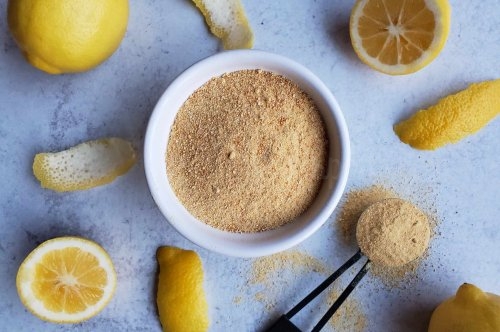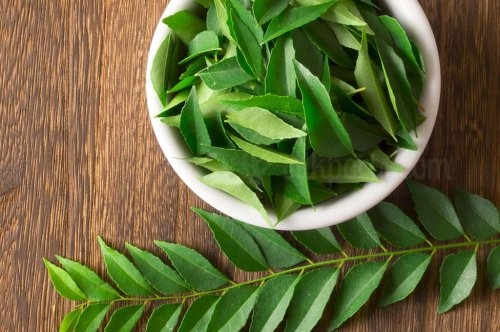
What is Butterfly Pea?
Clitoria ternatea, commonly known as Asian pigeonwings, bluebellvine, blue pea, butterfly pea, cordofan pea, Darwin pea, blue ternate, is a plant species belonging to the family Fabaceae.
In India, it is revered as a holy flower, used in daily puja rituals. The flowers of this vine were imagined to have the shape of human female genitals, hence the Latin name of the genus "Clitoria", from "clitoris". The species name is thought to derive from the city of Ternate in the Indonesian archipelago, from where Linnaeus's specimens originated.
Butterfly blue pea tea is made from the Clitorea ternatea plant. It has its origins in South East Asia and is commonly enjoyed in countries such as Thailand and Taiwan, where it is mixed with honey and lemon. The herbaceous plant is native to tropical Asia including regions in the Indian subcontinent and Southeast Asia (Indonesia, Bangladesh, Malaysia, and Thailand). Today, the butterfly pea is widely distributed in the United States, Australia, and Africa.
Clitoria ternatea is a high-quality, protein-rich legume, a "tropical alfalfa" often referred to as a protein bank that can be grown at low cost. Livestock tend to prefer it over other legumes and grasses and it is therefore much valued as a pasture legume. It is also used for cut-and-carry feeding systems and cut for hay and silage. An N-fixing legume, Clitoria ternatea is used as a ley legume or as green manure. It is a valuable cover crop in rubber and coconut plantations. The young pods are edible and used as vegetables in the Philippines. Butterfly pea is used in fences and in trellises as an ornamental for its showy flowers, valuable for dyeing and in ethno-medicine. All parts of Clitoria ternatea contain peptides called cliotides that have potent anti-microbial properties against Escherichia coli.
How to growing Butterfly Pea
Unfortunately, butterfly pea flower typically does not have a high germination rate. So always buy more seeds than you think you need. Here are a few steps that can help increase your seeds’ rate of success: Start with aged, healthy seeds. These should appear black or dark brown, round, and firm.
Check for their health with the water test. Place your seeds in a glass of water, and after about 15 minutes or so, the healthy seeds will float. After your float test, don’t remove your seeds from the water just yet! This leads to the next step.
Allow the seeds to soak for up to 24 hours in room temperature water. You can also nick the seeds to assist in water absorption. This means that you take a sharp utility knife and make one gentle slice through the seed’s outer coat. Nicking helps break through the seed’s tough outer shell, allowing water to get to the inner core and giving the new seedling an easier escape route. If planting in containers, make sure the pots are at least six inches deep to accommodate the root ball and allow for growth.
Place the soaked seeds in your prepared pot or garden one inch deep and at least four to six inches apart.Until the seedlings appear, keep the soil moist but not soggy.
It may take up to 30 days for your butterfly pea flower seedlings to make their appearance, so be patient.
Climate for growing Butterfly Pea
Highest growth occurs in summer when temperatures are > 27oC. Tolerates average daily temperatures as low as 15oC but growth is slow in spring. Not suited to areas with severe or frequent frosts.
Butterfly Pea Harvesting
The flowers bloom at their best for a day or so and they can be harvested and dried to use. However, a couple of days later when the flowers have shrivelled and started to dry on the vine. They can then be easily harvested by gently pulling on the end of the flower leaving the forming pod behind. This has the advantage to allowing the pods to form, dry on the vine then collected for seed saving.
As the pods mature, the begin to fill out with seeds and change in colour. If you’re planning on saving seeds, keep an eye out on the pods as they can dry and shrivel very quickly at times and spill their seed.
Uses of Butterfly Pea
Mostly Butterfly Pea used for making herbal tea. This tea is very popular & lots of health benefits included. Butterfly pea flower has a mild, almost bland flavor, but they more than make up for lack of flavor with their intense natural color! This distinctly true blue is actually quite rare in the plant world, making it a popular choice for natural blue food coloring. Most recipes including butterfly pea play on its wild pigments and rely on additional ingredients for added depth of flavor.
The deep blue natural color of the butterfly pea has long been used throughout southeast Asian cuisine as a natural food dye. In Malaysia, a traditional dish called Pulut Tai Tai is prepared by adding the blue petals to glutinous sticky rice.
In Thailand, the butterfly pea flowers are often battered in tempura and fried. Perhaps most well-known is Dok Anchan, or Thai butterfly pea tea. The blooms are steeped into a soothing and mild tea, usually flavored with lemongrass. This tea will undergo a seemingly magical color transformation when exposed to citrus, turning from brilliant sapphire to magenta and light pink in the blink of an eye.
Butterfly Pea Tea
Butterfly pea flower tea, commonly known as blue tea, is a caffeine-free herbal tea, or tisane, beverage made from a decoction or infusion of the flower petals or even whole flower of the Clitoria ternatea plant. Clitoria ternatea is also known as butterfly pea, blue pea, Aprajita, Cordofan pea, Blue Tea Flowers or Asian pigeonwings.
Derived from a plant that is common to most South East Asian countries, butterfly pea flower tea has been brewed for centuries but only recently been introduced to tea drinkers outside the indigenous area. Butterfly pea flower tea gains its distinctive tint from the deep blue color of the petals that has made the plant a popular dye for centuries. One of the aspects of the tea is the fact that the liquid changes color based on the pH level of the substance added to it, for instance, adding lemon juice to the tea will turn it purple.
Clitoria flowers or blue tea flowers are used for their supposed medicinal properties in Ayurveda.
Benefits of Butterfly Pea
Adding to the seemingly magical qualities of this plant are its numerous health benefits. The plant is rich in calcium, magnesium, potassium, zinc, iron, manganese and sodium. It’s also full of antioxidants.
- Facilitates Digestion.
- Uplifts Mood.
- Accelerates Weight Loss.
- Enhances Skin Health.
- Stimulates Hair Growth.
- Ameliorates Diabetic Conditions.
- Uplifts Cardiac Wellness.
- Promotes Healthy Eyesight.
 English
English
 Russian
Russian  Arabic
Arabic  French
French  Español
Español  Turkish
Turkish  German
German 







